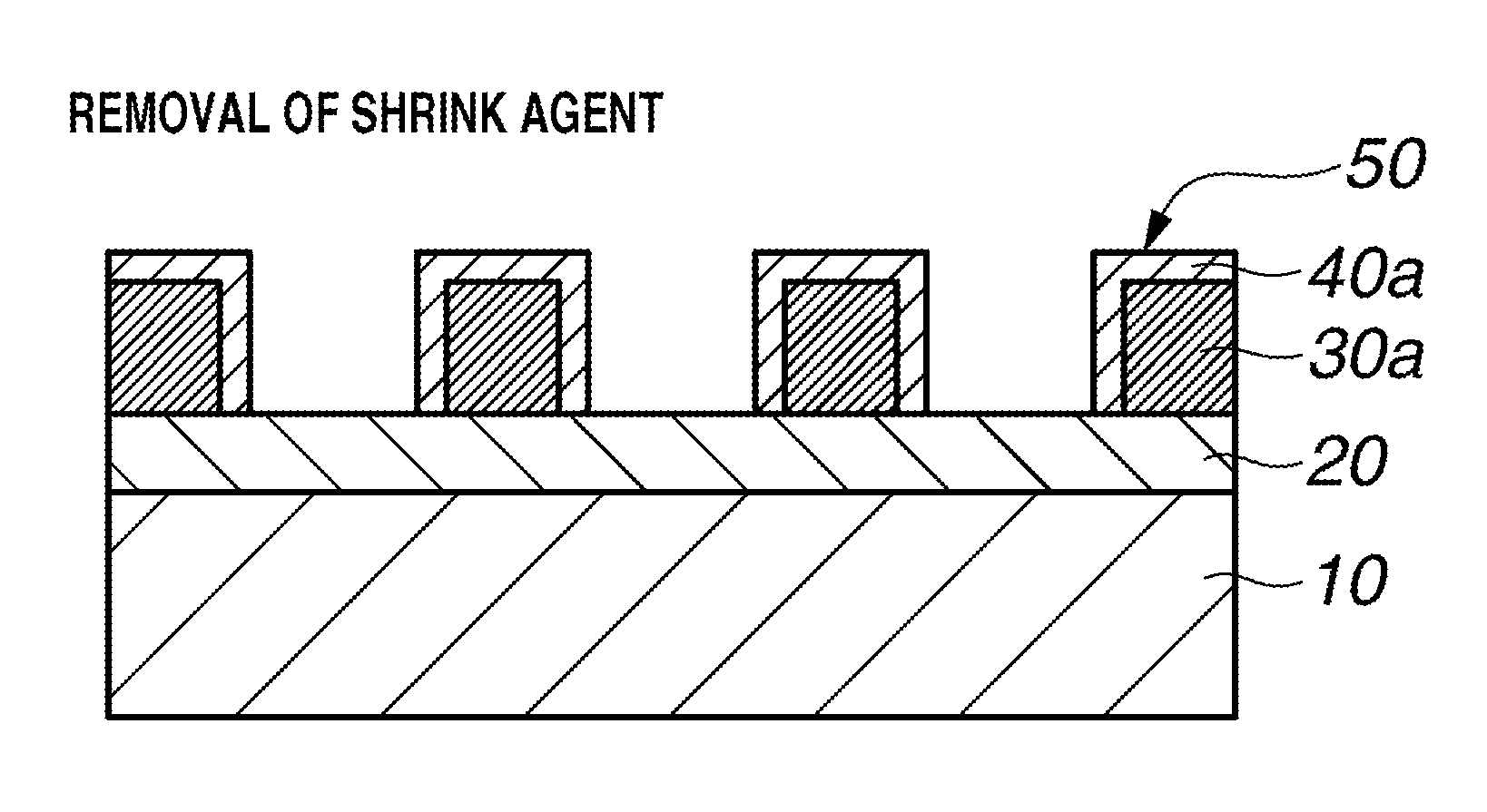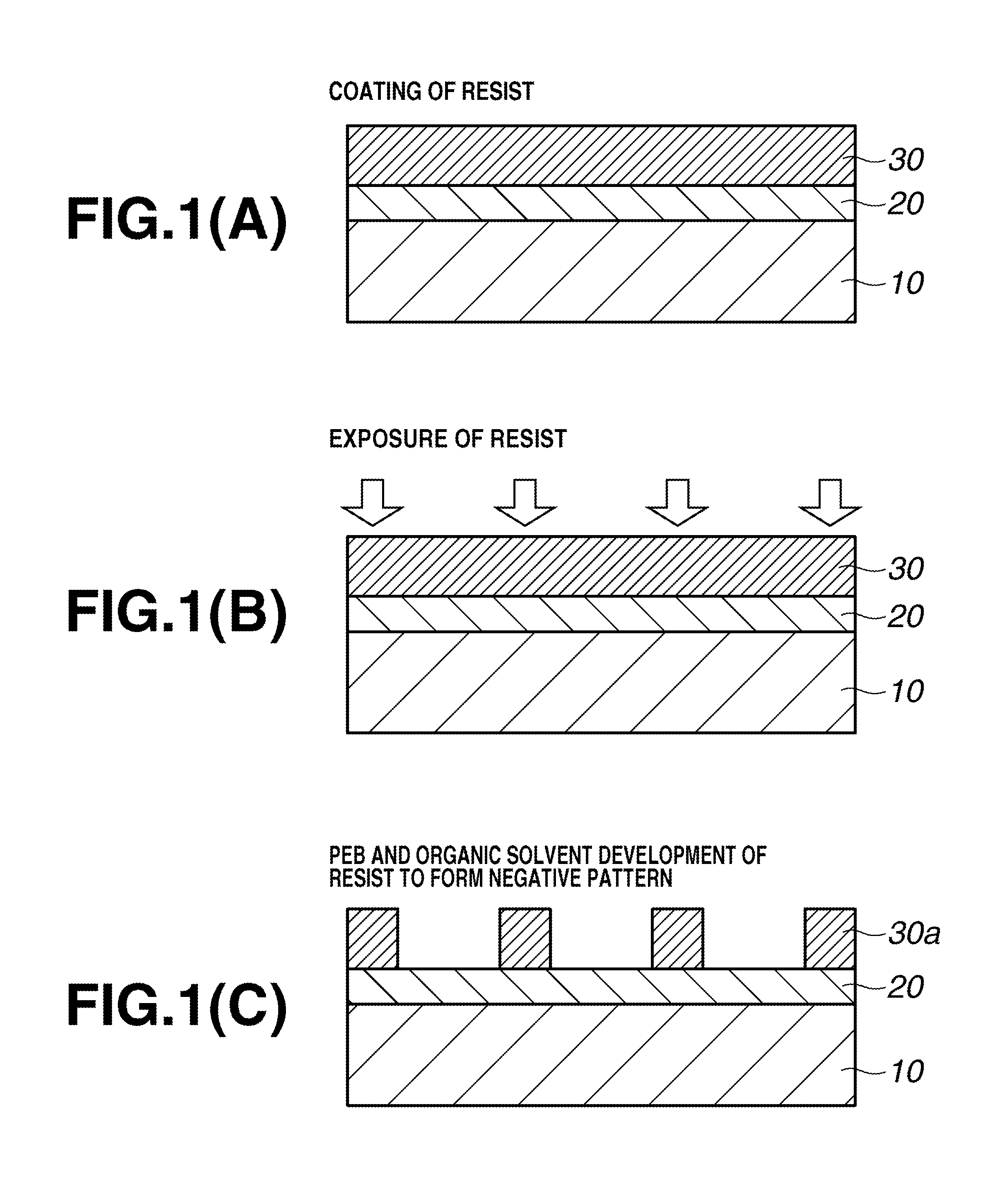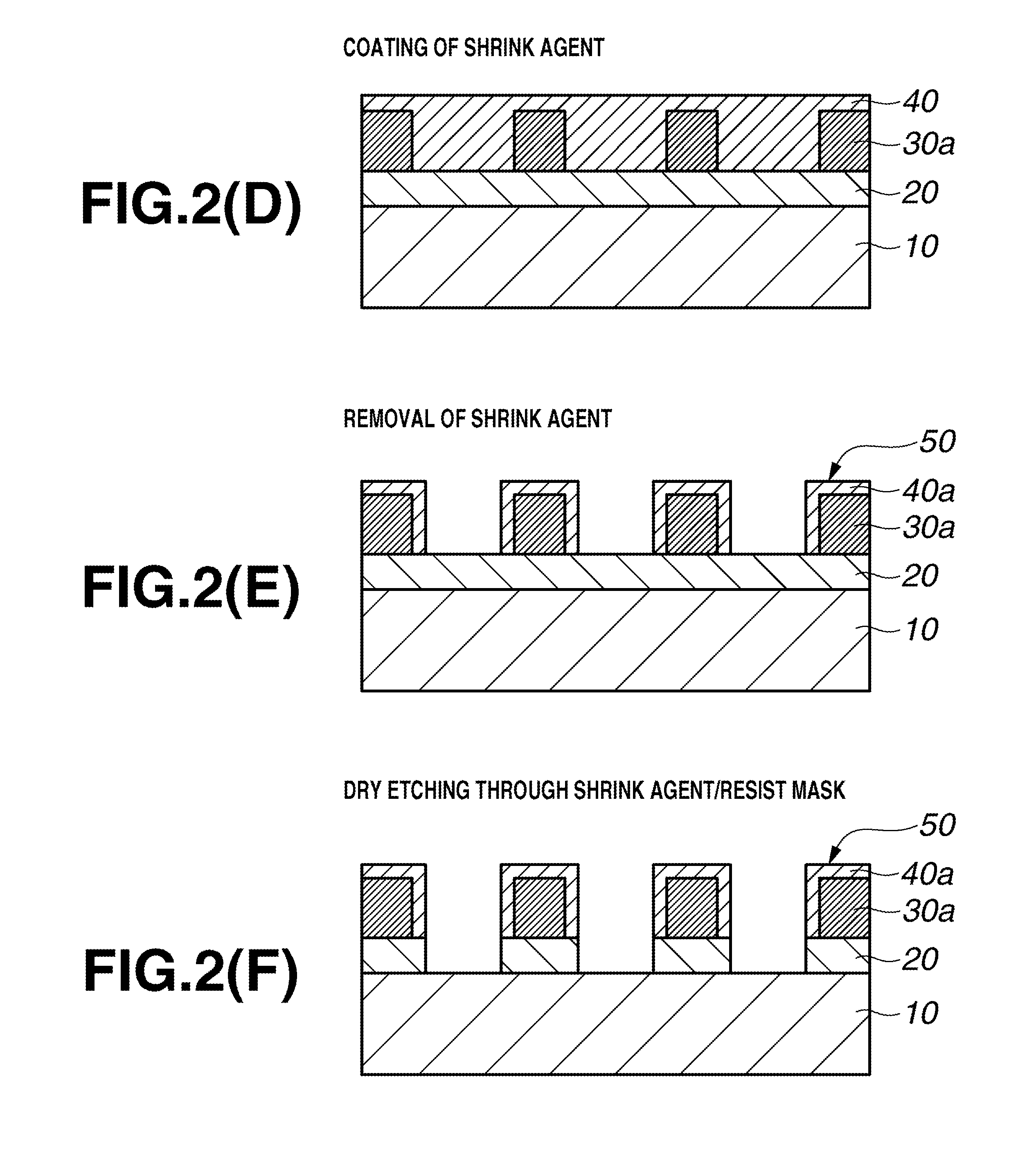Pattern forming process and shrink agent
a pattern forming and shrinking technology, applied in the field of shrinking agents, can solve the problems of reducing the dimensional variation of resist patterns, and achieve the effect of preventing bridge and blockage defects by shrinking and improving cd uniformity
- Summary
- Abstract
- Description
- Claims
- Application Information
AI Technical Summary
Benefits of technology
Problems solved by technology
Method used
Image
Examples
example
[0108]Examples of the invention are given below by way of illustration and not by way of limitation. The abbreviation “pbw” is parts by weight, and PGMEA is propylene glycol monomethyl ether acetate. For all polymers, Mw and Mn are determined by GPC versus polystyrene standards.
synthesis example
[0109]Polymers (for use in shrink agent and resist composition) were synthesized by combining suitable monomers in tetrahydrofuran solvent, effecting copolymerization reaction, crystallizing from methanol, repeatedly washing with hexane, isolation and drying. There were obtained polymers, designated Polymers 1-1 to 1-16 (as first polymer), Polymers 2-1 to 2-10 (as second polymer), Resist Polymer 1, and Water-repellent Polymer 1. The polymers were analyzed for composition by 1H-NMR spectroscopy and for Mw and Mw / Mn by GPC. The polymers are identified below with their analytical data.
PUM
| Property | Measurement | Unit |
|---|---|---|
| wavelength | aaaaa | aaaaa |
| wavelength | aaaaa | aaaaa |
| wavelength | aaaaa | aaaaa |
Abstract
Description
Claims
Application Information
 Login to View More
Login to View More - R&D
- Intellectual Property
- Life Sciences
- Materials
- Tech Scout
- Unparalleled Data Quality
- Higher Quality Content
- 60% Fewer Hallucinations
Browse by: Latest US Patents, China's latest patents, Technical Efficacy Thesaurus, Application Domain, Technology Topic, Popular Technical Reports.
© 2025 PatSnap. All rights reserved.Legal|Privacy policy|Modern Slavery Act Transparency Statement|Sitemap|About US| Contact US: help@patsnap.com



